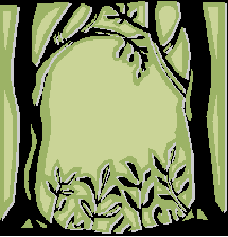




1. |
Logging is described
as the felling of the trees in the rainforest using artificial means
(chainsaws, axes, bulldozers) for commercial purposes whether by large
corporations or individuals. Logging is of two possible types: 1. Monocyclic silvicultural system: All trees in a given area is taken down 2. Polycyclic system: Only a few specified trees in a given area is cut, leaving a majority of the rest standing.
1. Shifting species composition: Bare areas left in the forest results in competition which gives rise to more light-demanding, faster species of smaller plants, thus developing a secondary forest of pioneers, and exterminating the original inhabitants which were the big trees.In the year 2000, Greenpeace set up an office deep in the heart of the Brazilian Amazon to track and monitor illegal logging, map logging areas, and take action in Brazil and in the international marketplace against the offending companies. They developed a technique to track illegal logging back to the exporting companies using ultraviolet paint. Over the duration of their research, they collected some valuable statistical facts and figures to emphasize the extent of the illegal logging taking place in Brazil. |
|
Home
|
Index
|
Preservation
|
|
Goals
|
Characterization |
Time plan |
|
FAQ's |
Monitoring |
Members |
|
Presentation |
Minutes |
Introduction
|